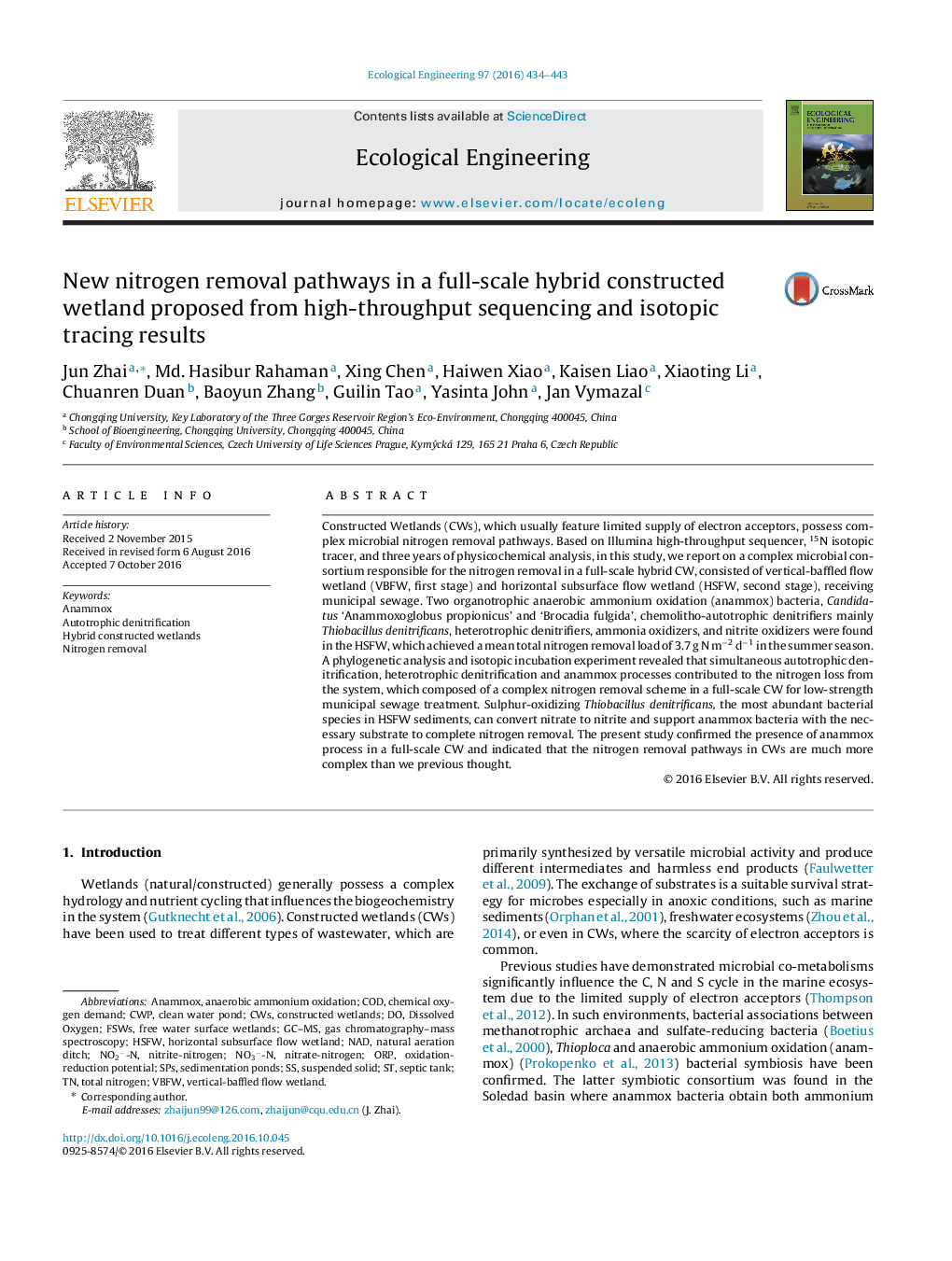| Article ID | Journal | Published Year | Pages | File Type |
|---|---|---|---|---|
| 4388404 | Ecological Engineering | 2016 | 10 Pages |
•Nitrogen removal pathways in engineered ecosystems are more complex than we previously thought.•Confirmed existence and activity of two anammox bacteria: Candidatus ‘Anammoxoglobus propionicus’ and ‘Brocadia fulgida’ in a full-scale CW.•Simultaneous autotrophic and heterotrophic denitrification and anammox processes contributed together to the nitrogen removal.
Constructed Wetlands (CWs), which usually feature limited supply of electron acceptors, possess complex microbial nitrogen removal pathways. Based on Illumina high-throughput sequencer, 15N isotopic tracer, and three years of physicochemical analysis, in this study, we report on a complex microbial consortium responsible for the nitrogen removal in a full-scale hybrid CW, consisted of vertical-baffled flow wetland (VBFW, first stage) and horizontal subsurface flow wetland (HSFW, second stage), receiving municipal sewage. Two organotrophic anaerobic ammonium oxidation (anammox) bacteria, Candidatus ‘Anammoxoglobus propionicus’ and ‘Brocadia fulgida’, chemolitho-autotrophic denitrifiers mainly Thiobacillus denitrificans, heterotrophic denitrifiers, ammonia oxidizers, and nitrite oxidizers were found in the HSFW, which achieved a mean total nitrogen removal load of 3.7 g N m−2 d−1 in the summer season. A phylogenetic analysis and isotopic incubation experiment revealed that simultaneous autotrophic denitrification, heterotrophic denitrification and anammox processes contributed to the nitrogen loss from the system, which composed of a complex nitrogen removal scheme in a full-scale CW for low-strength municipal sewage treatment. Sulphur-oxidizing Thiobacillus denitrificans, the most abundant bacterial species in HSFW sediments, can convert nitrate to nitrite and support anammox bacteria with the necessary substrate to complete nitrogen removal. The present study confirmed the presence of anammox process in a full-scale CW and indicated that the nitrogen removal pathways in CWs are much more complex than we previous thought.
Graphical abstractFigure optionsDownload full-size imageDownload as PowerPoint slide
